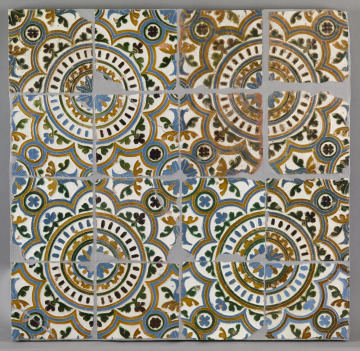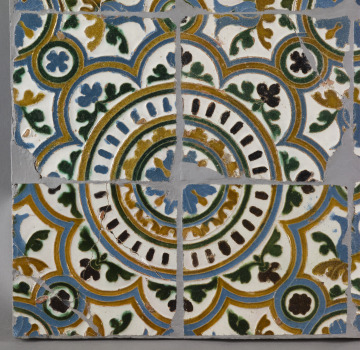Tiles
- Culture
- Spanish
- Associated
- Mudéjar period, c.1100–c.1499
- Date
- first half 16th century
- Material
- Glazed earthenware
- from
- Toledo, Castilla-La Mancha region, Spain, Europe
- Classification
- Architectural elements, ceramics
- Collection
- Islamic Art
- Current Location
- Not on view
- Dimensions
- sixteen tiles: 22 3/8 x 22 7/8 x 1 1/4 in. (56.8 x 58.1 x 3.2 cm)
- Credit Line
- Museum Purchase
- Rights
- Public Domain
- Object Number
- 38:1939.1
NOTES
These tiles would have formed part of a much larger panel decorating the lower portion of an indoor wall. They were made using the cuenca technique, also known as arista, designed to prevent the bright colors of the glaze from running together during firing. Before firing, the still-moist tile would be pressed into a mold, which would create ridges outlining the design and separating the areas where different colored glazes would be applied. Each tile forms one quarter of a design which can be endlessly repeated, just as the patterns on the doors to the left and the stucco panels to the right also lend themselves to endless repetition. The cuenca technique was invented in either Seville or Toledo as a cheaper, yet still aesthetically effective, substitute for cuerda seca (which can be seen in the border tiles on the panel to the left of the monumental doors). Large quantities of such cuenca tiles were mass-produced, and identical tiles can still be seen in situ at the Convent of Santa Isabel in Toledo.
We regularly update records, which may be incomplete. If you have additional information, please contact us at provenance@slam.org.

